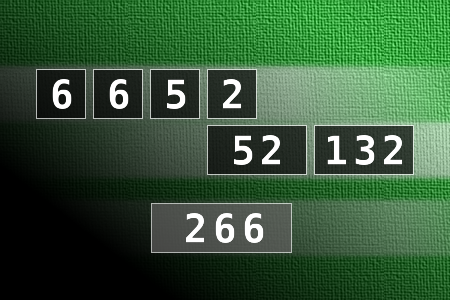Calculate the number 266
NUMBERMANIA: Calculate the number 266 using numbers [6, 6, 5, 2, 52, 132] and basic arithmetic operations (+, -, *, /). Each of the numbers can be used only once.Correct answers: 37
The first user who solved this task is Sanja Šabović.
#brainteasers #math #numbermania


